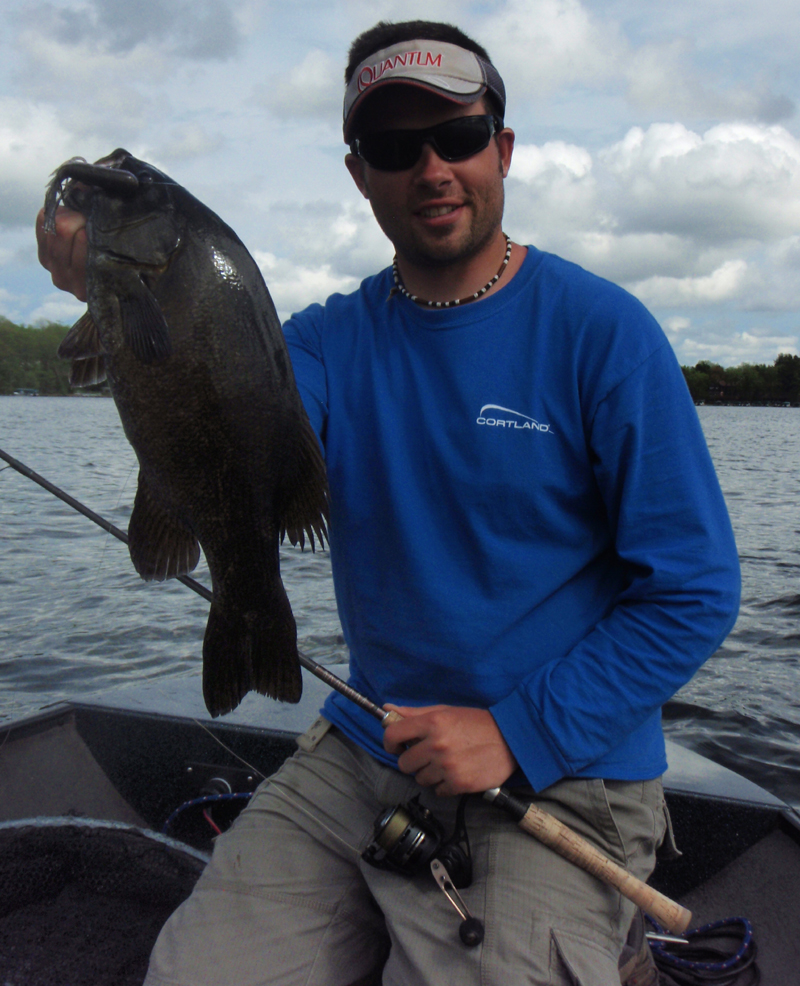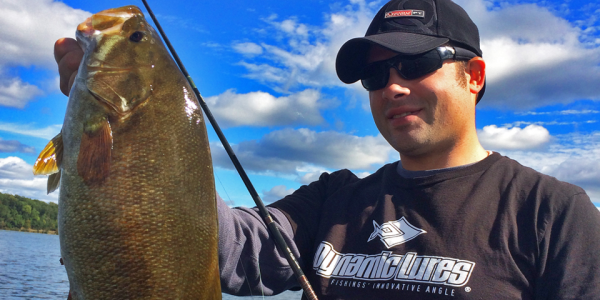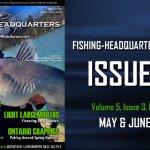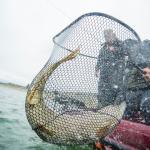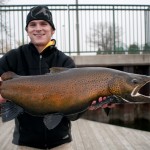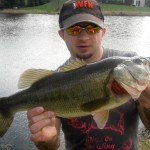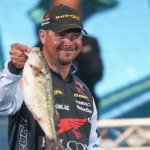By Andrew Ragas
With ice fishing coming to a close, there’s no better time to begin preparing for this year’s open water season, and evaluating bass fishing expectations. As a new season approaches, I often analyze my performance from the previous year, and review techniques and strategies that worked and didn’t work, and build upon them with the objectives they may be successful for me again in this upcoming season.
There are no shortcuts to consistently catching quality bass, but there are certain strategies and methods you can implement to improve your success. Here are my best tips for catching more and bigger bass this year. Give consideration to each, and you could have a better season than you’ve had in a long time.
Sunny Delight
One common bass fishing misconception is how fish avoid the sunlight as much as possible. It could be true for largemouth bass at times, but smallmouths on the other hand beg to differ. Majority of my good days of smallmouth fishing take place on sunny days. Sunlight stimulates smallmouth activity and drives their feeding patterns. Because they are visual feeders, smallmouths are most responsive in such conditions year round. The sun makes smallmouths happy fish, regardless of depth. However, water temperatures will dictate their seasonal locations.
Spring Warm Water Sources
Springtime brings warming weather and water temperatures. In return, abundant schools of pre-spawn smallmouth bass invade the shallows to stage for spawn. Specific lake locations that conduct heat are instrumental in scoring early season smallmouth success. The areas that warm quickest are determined by underwater structure and the lake’s geography. Typically, shallow bays with exposure to the southern skies will warm the fastest.
When sunlight hits specific pieces of structure and reflects off certain bottom types, the surrounding area will bake and warm rapidly. I generally reference these areas as “microwaves”. Every lake I fish for smallmouths is full of these unique spots and they are nothing more than natural heat conductors that can only be found on your own. Good heat conductors to key in on throughout early spring are shallow sandy spawning bays (north and east shorelines best), sand flats, rocky shoals, boulders, downed wood and windblown shorelines that are exposed to sunlight.
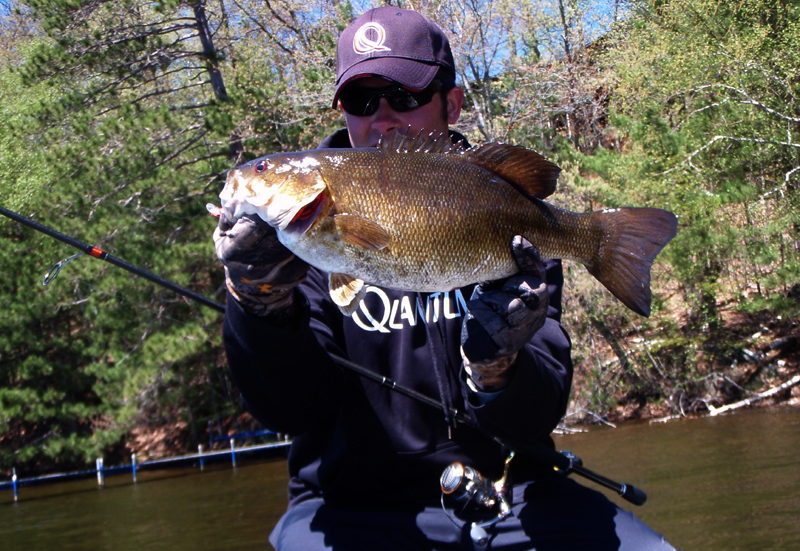
Besides natural lakes, I also do a significant amount of early season smallmouth fishing on rivers and reservoirs. Fish magnets in these environments are laydowns, boulders, rock fields, eddies and current breaks, underwater benthic zones (current breaks along bottom) located along river bottoms, creek mouths and inflows, and man-made rip-rap.
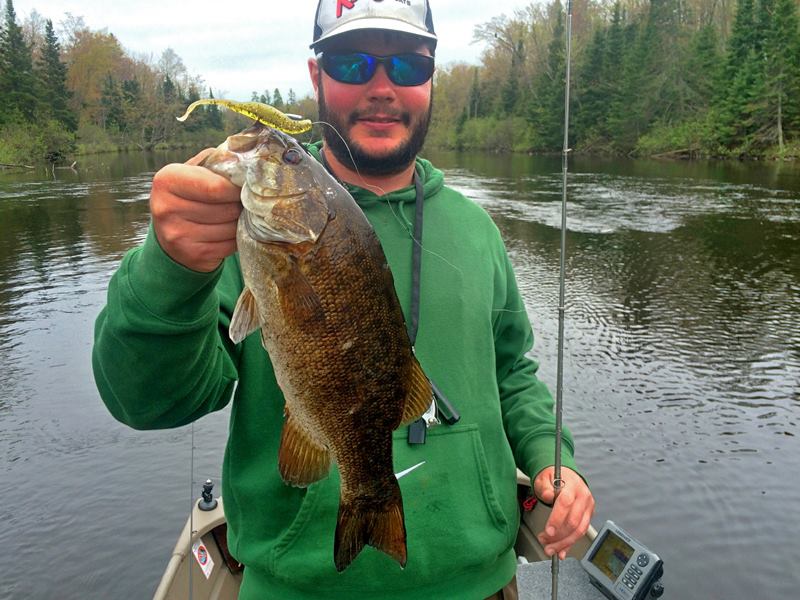
Camping Out For Bites Versus Lake Hopping
From spring through fall, I sometimes spend much of my day fishing a single lake, and waiting for fish activity to happen, and feeding windows to open. At some point or another, we’ve all been guilty of leaving the lake too prematurely in the day. While it’s difficult to predict good or bad fishing, this mistake may result in missing out on bites. It commonly happens in spring before giving sunlight a chance to warm water temperatures. It also happens any time, at any point in the year.
One of the most important fishing tools anyone can acquire is patience. Waiting for feeding windows to open and fish movements to happen resulting from a weather change, lunar period, or a water temperature increase can lead to an amazing outing if you haven’t left the water to go elsewhere. The fishing that may have been poor hours earlier just got good all thanks to patience and persistence, and being at right place at the right time.
Meanwhile, camping on a lake all day may not be the solution some days. I am also a proponent on lake hopping, fishing multiple lakes in a single day, which comes beneficial during the long days of summer. This strategy fares best when I have nearby lakes to choose from, that can be fished within minutes. It maximizes fishing productivity, helps me stay on bites, and make the most out of my precious fishing time.
Seeking Mid-Lake Spawners
During the spring and early summer spawning period, anglers beat the banks looking for vulnerable nesting smallmouths. While this is a productive and challenging means of fishing, these fish receive pressure and get beaten up by anglers well before nesting concludes.
In recent years, I’ve turned away from the shorelines and have put more focus on looking for spawners utilizing shallow mid-lake bars. I speculate smallmouths spawn in shallow open areas of the lake to evade angling pressure, spawn unmolested, and use habitat that’s readily available and of most immediate access from their wintering holes.
Smallmouths in these locations tend to nest deeper, between 5 and 10 ft. Fish are often aggressive, angry, and unconditioned, and I have taken them on mid depth crankbaits and jerkbaits. Finessing for bites, as it’s needed in the shallows, isn’t necessary out in the open because you will be combating the wind. This spawning behavior doesn’t take place on all lakes, but it’s worth trying if your lake has this type of open water structure. A good percentage of these fish are never targeted during the spawn, and are rarely caught in spring.
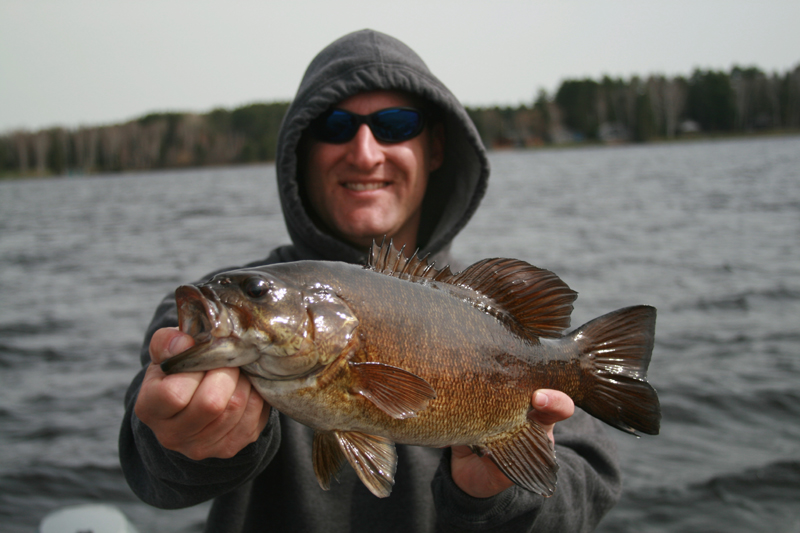
Summertime Night Fishing
During the dog days of summer, big smallmouth bass become creatures of the night. When nighttime calls, and most anglers are asleep, the fish go nocturnal and feed. Deep dwelling gamefish species retreat from their mid-lake open water locations and cool water sanctuaries, encroaching shoreline areas and littoral zones in search for prey. On the many natural lakes and flowages I fish, smallmouth bass undertake this short-distance movement to feast on the abundance of rusty crayfish and unsuspecting preyfish and insect hatches.
Beginning in mid July and lasting throughout August, a unique feeding window emerges on some of my favorite northern lakes. Lasting anywhere from four to six weeks, depending upon region and climates, I’ve observed more big bass feeding at night rather than daytime. Because this after dark summer pattern is influenced by crayfish movements and location, shallow water environments in depths between 5 to 10 feet are the most ideal starting points. Usually, these shallow depths encompass luxurious crayfish cover such as laydowns and downed wood, fish cribs, gravel, and rocky shoals.
At a nocturnal period when most anglers think smallmouths go dormant, loud surface topwaters and vibration-emitting hardbaits score gargantuan bass that are feeding heavily. Focus on habitat-rich shorelines and main lake flats that are known crayfish and smallmouth feeding grounds. I meticulously cover these areas by power cranking, fan-casting with loud rattling crankbaits such as the Rapala Crankin Rap 05 and KVD Square Bill. As my most successful nighttime smallmouth lures to date, I have found these crankbaits to possess the loudest rattles and widest, most compact vibration. Both properties are critical to triggering strikes at night. If surface activity is present, turn to topwaters such as Rapala X-Rap Pops, Skitter Walks, and Zara Spooks.
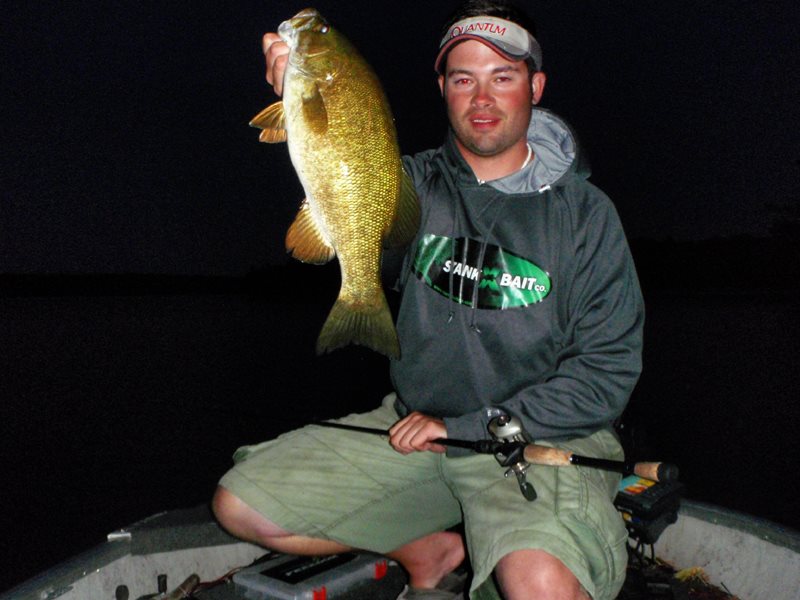
Reacting and Reciprocating Baits on Conditioned Fish
Smallmouths don’t always follow our prescribed patterns faithfully. Just because you’ve located them doesn’t always mean they’re apt to strike. They still must somehow be triggered.
Throughout the year, the usage and reciprocation of hard and soft jerkbaits is a key tool, and one of my most effective and deadliest fish catching presentations. It is important to understand the nuances and situations for when to use both simultaneously. Selecting between a hard jerkbait and a soft jerkbait, realize first that you will need both lure types followed by patience when prospecting for smallmouths. For me, finding smallmouths with these techniques often means speed in presentation with aggressive jerkbaits. I then turn to more subtle and slower jerkbaits when I know I will be camping out at the spot and a nice concentration of smallmouths has been located
While a percentage of fish initially encountered will be aggressively feeding, a handful within the population is stubborn. As smallmouths grow conditioned and fish end up seeing multiple casts thrown their way, a number of fish may refuse to strike, or attempt to only push or nudge the bait avoiding hooks altogether. This is where I follow up with the soft jerkbait to clean house.
Equally effective for smallmouths, and sometimes even better depending on fish activity levels, soft jerkbaits in the fluke style can be fished with the same cadence as a hard jerkbait to draw strikes. It draws strikes from aggressive fish, but also triggers reluctant strikes from wary and conditioned fish. The soft jerkbait will often catch smallmouths from the same spots where the hardbait blew past them moments earlier.
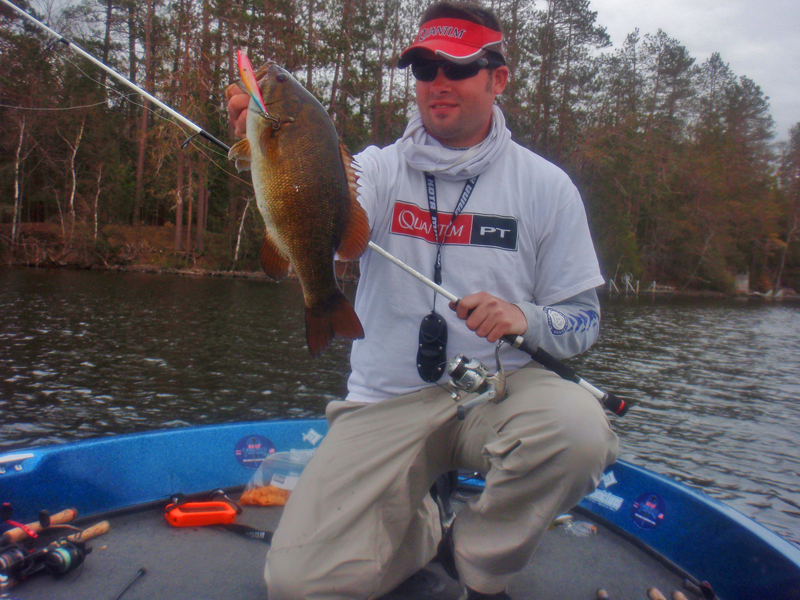
Outside of the Box Presentations
At the front deck of my Ranger, I often keep 10 different rods and reels rigged and ready to combat most smallmouth presentations. In the rod storage compartment below, I then keep an additional 10 wrapped in my Rod Gloves, ready to use if I feel necessary. Though this excessive collection isn’t needed, I’m covered for most every possible bass fishing tactic and it suits my style. The diversity of my boat’s tackle selection has enabled me to become a more versatile angler, have open-mindedness for experimentation, and enjoy the thrills of success with each new experience.
As new techniques and product introductions gain momentum and popularity, many anglers have a habit of forgetting about lures and techniques that don’t get used. They also fail to utilize certain others that would be considered outside of the box. These may include lures designed for other species, or largemouth bass lures that aren’t getting applied for smallmouths. Fishing allows us to express our creativity. The process of lure selection offers anglers creative outlets to expand upon the thought and ideas of acceptable presentations. Outside-of-the-box smallmouth presentations aren’t new, but what makes them special is most smallmouths aren’t conditioned to them.
Fall Fishing on Lakes That Don’t Stratify
The dreaded period of fall turnover leads to difficult fishing conditions and lock-jawed bass. Luckily I’ve found ways to combat this problem thanks to the availability of lakes I have to choose from. Among the many lakes I have are some that never stratify, or develop a summer thermocline. Consequently, turnover doesn’t exist and the smallmouth fishing can be excellent during fall without such biologic interruptions.
Lakes that don’t stratify are typically shallow bowl shaped lakes and flowages that are shallower than 25 feet. Most are mesotrophic lakes with clear water and moderate fertility. Large reservoirs or natural lakes that have constant wind or a frequent current will not typically turn over either. On these waters, smallmouths can be concentrated in similar locations as you would on lakes that turn over, such as deep holes and the steepest breaklines that can be located. Being able to fish these lakes during the traditional turnover period of early October has been able to extend my bass fishing season, and allows me to fish shallower throughout fall.
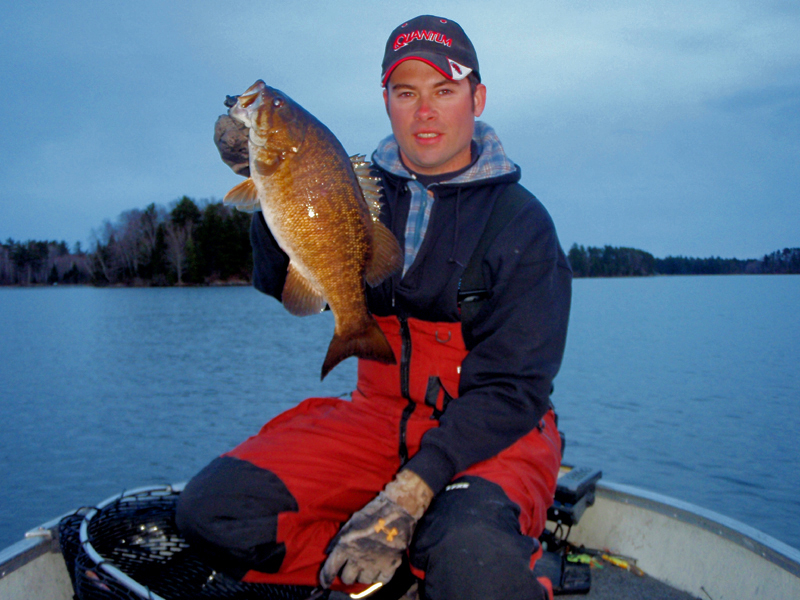
Wind and Water Clarity
Bass anglers often complain about the wind, but they’d have better tolerance for it if they knew how much it can produce a great bass bite. The region churned up by waves attracts the lake’s entire food chain, from phytoplankton to baitfish and smallmouths. The reduced light penetration will also allow you to fish aggressively with crankbaits, spinnerbaits, and jerkbaits in order to capitalize on a frenzy of feeding fish. However, take into consideration that smallmouths will still require good water clarity in order for these spots to be fished successfully.
When fishing Wisconsin’s super clear smallmouth lakes, I prefer some wind especially if it’s blowing hard enough to generate a 1 foot chop. I have confidence that I’ll catch smallmouths due to the lake’s food sources and cooler water temperatures being blown into these regions of the lake. Wind drives smallmouths into the shallows, making them easier to catch. It also oxygenates the water, which is a tremendous benefit during mid-summer as it will cool surface temperatures.
I often experience a major spike in smallmouth activity during a west and southerly wind. There’s nothing worse than an east or north wind, which slows the bite. If it’s been slow fishing on the calm side of the lake, drive to the windblown side as the bite can often be strongest there.
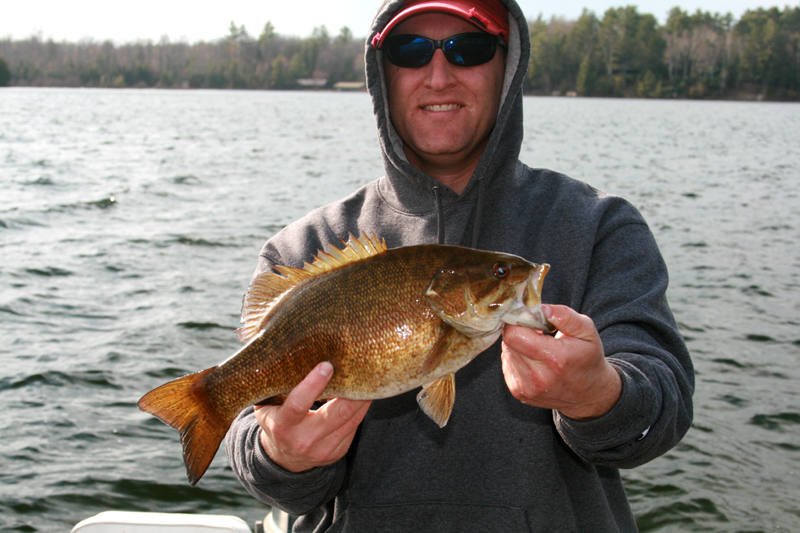
Mapping and Cartography
Learning to fish a new lake for smallmouths successfully requires researching the lake’s ecological make-up. This includes its topography, fishery, and history. By having an idea of the lake’s make up and composition, you will have insight as to what the lake’s topography is and the type of bass fishery it may comprise.
In order to be successful at picking apart a new lake you must be good at map reading, and learning to understand the readings produced by your locators and navigation charts. Electronics are so good these days, that even a novice angler can use modern electronics to find schools of fish. But it’s the good anglers using them to their full capacity are the ones likely to be most successful. GPS and topographic maps on fish locators has made finding spots and returning to them a breeze. Even finding your way around a new lake used to be a major ordeal. I grew up without this technology, trying to hold onto a paper map on a windy day trying to figure out where on the lake I was. Learning to understand and interpret your graphs will make you a more well-rounded and successful angler in any capacity.
